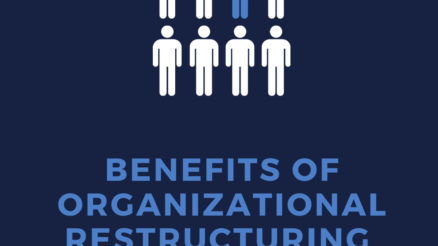The digital revolution is happening at fast pace.
And every day businesses and organizations need to make their systems updated and adopt to new digital technology. And this is the only way to stay competitive in the modern world.
Information Technology Infrastructure Library (ITIL) is a framework that helps organizations to install IT technology and make IT system updated and adopt to IT changes in a smooth manner.
In this blog post, we’ll define what is ITIL, why it is important and ITIL change management types and what are its benefits and challenges.
Let’s start
What is ITIL Change Management?
ITIL (Information Technology Infrastructure Library) change management is a process within the ITIL framework that is used to manage and control changes to IT systems and infrastructure.
The goal of ITIL change management is to minimize the impact of changes on the availability and performance of IT services, while ensuring that changes are properly planned, tested, and implemented.
The process includes steps such as identifying the need for a change, assessing the risks associated with the change, creating a plan for the change, testing the change, and implementing the change. ITIL change management also includes a process for evaluating the success of the change and making any necessary adjustments.
Why ITIL Change Management is Important?
ITIL change management helps to minimize the impact of changes on the availability and performance of IT services. This is critical for maintaining business continuity and ensuring that IT services are always available to users.
It helps to identify and assess the risks associated with changes, and to create plans to mitigate or eliminate those risks. This helps to minimize the chances of unexpected problems arising as a result of changes.
ITIL change management helps to streamline the change management process, making it more efficient and reducing the time and resources required to implement changes.
ITIL change management provides a clear and consistent process for tracking and documenting changes, which helps to ensure that changes are properly planned, ITIL change approval process is undertaken and implemented, and that the success of the change can be evaluated. This also helps to ensure accountability for changes, and to identify and correct any issues that arise.
ITIL change management also includes a process for evaluating the success of changes and making any necessary adjustments. This helps to ensure that the change management process is always improving and that it is better suited to meet the needs of the organization.
ITIL Change Management Types
In ITIL, change management is categorized into different types, based on the nature and level of risk associated with the change. The different types of ITIL change management are:
1. Standard Change
These are pre-approved changes that are well understood and have a low risk of failure. These changes include small changes that are not costly. These are easy to install and managed smoothly. These changes are not dependent on other processes. Examples include software upgrades or patching. They can be authorized and implemented quickly and easily, as they don’t require a detailed assessment or approval.
2. Normal Change
These are changes that are not considered to be standard changes but still have a low level of risk. Examples include adding new users, new hardware, or software. They require authorization and approval before they can be implemented. Usually, a detailed Request for Change is required from the advisory board to implement this type of change.
3. Emergency Change
These are changes that need to be implemented immediately in order to resolve an urgent problem. Examples include restoring service after a failure, or applying a critical security patch. They require authorization and approval, but the process is expedited to minimize the time required to implement the change. In this case, change request can be processed after the making that change.
4. Major Change
These are changes that have a significant impact on the IT infrastructure, services, or users, and a higher level of risk. Examples include the implementation of new systems or major upgrades. They require a detailed assessment, authorization and approval before they can be implemented.
5. Minor Change
These are changes that have a small impact on the IT infrastructure, services or users, and a low level of risk. Examples include updating configurations, adding new users or new devices. They also require authorization and approval before they can be implemented, but they are less complex than normal changes.
6. Urgent Change
This type of change is similar to emergency change but it’s not necessarily related to an incident resolution. They might be required to meet a legal or compliance requirement or to support a business-critical project. An example of an urgent change in ITIL change management is the need to apply a critical security patch to a production server to address a known vulnerability. This change would be considered urgent because it needs to be implemented immediately in order to prevent a potential security breach.
7. Project Change
These are changes that are part of a larger project and they are managed as a specific project type. They may involve multiple teams, stakeholders, and have a higher level of complexity. They require a detailed assessment, authorization and approval before they can be implemented. For example, the implementation of a new customer relationship management (CRM) system for a company. This change would be considered a project change because it is part of a larger project and it involves multiple teams, stakeholders, and has a higher level of complexity.
8. Risk-Based Change
This type of change management is based on the level of risk that the change brings to the organization. Changes are assessed and classified based on the level of risk and an appropriate level of review and approval is applied. An example of a risk-based change in ITIL change management is the implementation of a new software application for a bank. This change would be considered a risk-based change because it is assessed based on the level of risk that the change brings to the organization.
Benefits of ITIL Change Management
ITIL change management can bring many benefits to an organization, including:
Improved service availability
ITIL change management helps to minimize the impact of changes on the availability and performance of IT services, which helps to ensure that services are always available to users. This is critical for maintaining business continuity and ensuring that IT services are always available to users.
By implementing ITIL change management, organizations can ensure that changes are properly planned, tested and implemented, which helps to minimize the chances of unexpected problems arising as a result of changes. This means that changes are less likely to cause disruptions to the availability of IT services, and that services are more likely to be available to users when they need them.
Reduced risk
ITIL change management helps to identify and assess risks associated with changes, and to create plans to mitigate or eliminate those risks. This helps to minimize the chances of unexpected problems arising as a result of changes, which can have a negative impact on the IT infrastructure, services, and users.
By identifying and assessing risks associated with changes, ITIL change management enables organizations to make informed decisions about whether or not to proceed with a change, and to implement controls to minimize the chances of problems arising. For example, if a change is identified as being high risk, the organization may decide to delay or cancel the change, or to implement additional controls to minimize the chances of problems arising.
Increased efficiency
ITIL change management enables organizations to implement changes in an efficient manner. This helps to reduce the time required to implement changes, as well as the resources required to implement them. For example, ITIL change management allows organizations to automate certain steps of the change management process, such as approvals, which can save time and reduce the need for manual intervention.
Enhanced accountability
ITIL change management provides a clear and consistent process for tracking and documenting changes, which helps to ensure that changes are properly planned, tested and implemented, and that the success of the change can be evaluated. This also helps to ensure accountability for changes, and to identify and correct any issues that arise.
Continual improvement
ITIL change management also includes a process for evaluating the success of changes and making any necessary adjustments. This helps to ensure that the change management process is always improving and that it is better suited to meet the needs of the organization.
Improved compliance
ITIL change management helps organizations to demonstrate compliance with industry regulations and standards, as they can provide evidence of the processes and controls, they have in place to manage changes.
Better communication and collaboration
ITIL change management provides a structure for communication and collaboration between different teams and stakeholders, which helps to ensure that all parties are aware of changes and their impact.
Challenges of ITIL Change Management
ITIL change management can present certain challenges for an organization, including:
Resistance to change
People may be resistant to change for various reasons and this can make it difficult to implement new changes. Employees may be set in their ways, fear change or lack understanding of the change.
Lack of resources
Implementing ITIL change management can require significant time and resources, which may be difficult to obtain.
Limited visibility into the IT environment
ITIL change management requires a detailed understanding of the IT infrastructure, services and users, but sometimes organizations lack the necessary visibility and data to make informed decisions.
Complexity of the process
The ITIL change management process can be complex, and it may be difficult to understand the various steps and requirements.
Difficulty in prioritizing changes
With so many changes being proposed, it can be difficult to determine which changes should be implemented first and which should be deferred.
Difficulty in testing changes
Testing changes can be a complex and time-consuming process, and it may be difficult to ensure that all changes are thoroughly tested before they are implemented.
Final Words
ITIL change management is an important process within the ITIL framework that helps organizations to manage and control changes to IT systems and infrastructure. By following the ITIL change management process, organizations can minimize the impact of changes on the availability and performance of IT services, while ensuring that changes are properly planned, tested, and implemented. The benefits of ITIL change management include improved service availability, reduced risk, increased efficiency, enhanced accountability, and continual improvement.
However, implementing ITIL change management can also present certain challenges such as resistance to change, lack of resources, limited visibility into the IT environment, complexity of the process, difficulty in prioritizing changes and difficulty in measuring the success of the change. By understanding these challenges and taking appropriate action, organizations can ensure the success of their ITIL change management process and ultimately improve the overall performance and availability of their IT services.



